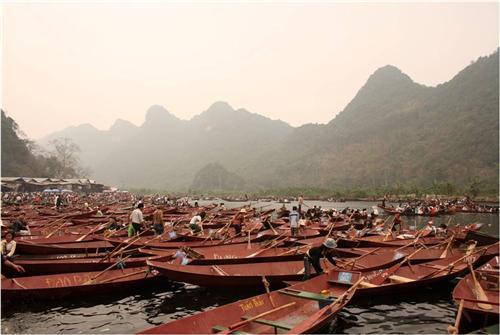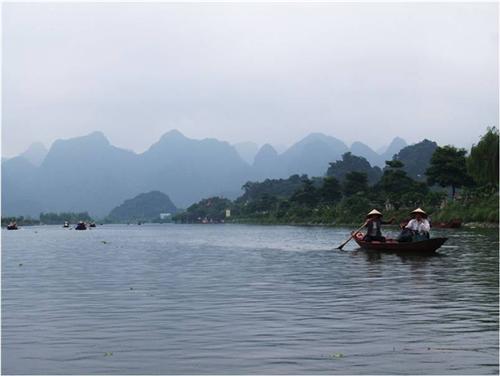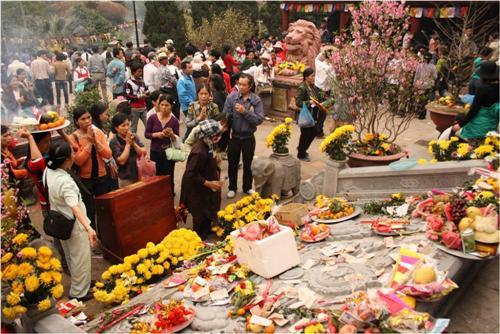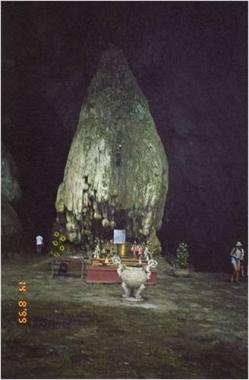Perfume Pagoda (Chùa Hương)
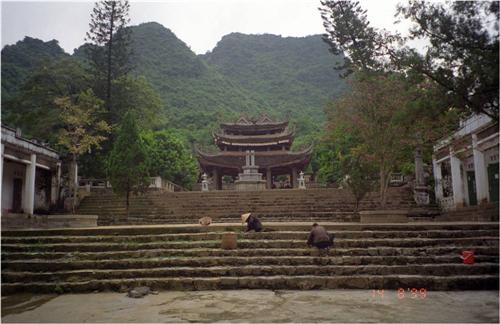
Located in Ha Tay province, 70 km southwest of Ha Noi, Chùa Hương (Perfume Pagoda) is one of the most popular religious sites in Vietnam. Chua Huong is the name of a cluster of temple sites in the mountain area of Huong Son in the province of Ha Tay. Chua Huong is famous for the annual pilgrim site of Buddhists. Yearly, between the first and the third lunar month of the year (February to March), just after the Tết festival (Lunar New Year), the Perfume Pagoda Festival (Hoi Chua Huong) attracts from all over the country. The festival is also a well-known site in the Vietnamese literature attracting poets and painters and a meeting place for young couples. The festival period is the busiest time.
At the other time of the year, most of visitors are foreign and local tourists. There are several sites to visit at the Perfume Pagoda's area: Thiên Trù pagoda, Hinh Bồng pagoda, Giải Oan pagoda, Hương Tích cave, Trình temple, Thanh Sơn Pagoda, Long Vân, Cây Khế, Tuyết Sơn and Mẫu Mẹ temple. Most of the tours take exemplary the Trình temple, the Thiên Trù pagoda and the Hương Tích cave. The visit of Chua Huong it is normally a day trip from Ha Noi. First it takes an approximately 2 hour drive from Ha Noi to Ben Duc pier.
Although there is a road from the pier to the base of pagoda complex, using row boats on Yen Vi river which (ca 55000 Dong) is the more romantic and scenic alternative to reach Chua Huong. The 45 minute boat ride on the Yen River is for some visitors the highlight of the trip. The first stop of the boat trip will be Den Trinh (Registration Shrine), Symbolically, in former time, all visitors to Chua Huong should first "trinh" or register at the shrine to announce their intentions. The boat will arrive next at Thien Tru temple (heavenly kitchen), which is kind of “Outer Temple”, built in the 18th century. Thien Tru temple is embedded within hills and mountains. The rock formations in this area is also called “heavenly kitchen” as they – with some imagination - look like cooks working. Thien Tru temple is renowned for the Thuy Tien tower, a monolith of granite. To the right of Thien Tru temple is Tien Son grotto, famous for the five granite statues and the various formations on the walls of the cave.
When you struck one of the formations, it sounds like a “khanh”, a Vietnamese percussion; some other sound like bells. The visit continues to Dong Huong Tich (Huong Tich Cave or Inner Temple). The very scenic path leading to Dong Huong Tich has an endless number of steps, along narrow and bumpy stairs.. In recent years, a cable car system was built, offering an alternative to not-so-sportive visitors (30000 Dong one-way ticket, an energy saving option is to go up by cable car and walk down). According to a legend, the Huong Tich grotto was discovered 2000 years ago. The inscription "Nam Thien De Nhat Dong" (by Trịnh Sâm, 1767 – 1782, ruler of Northern Viet Nam) at the granite slab at the entrance means "the most beautiful grotto under southern sky". The grotto, which serves also religious events, has several colorful stalagmites and stalactites.




